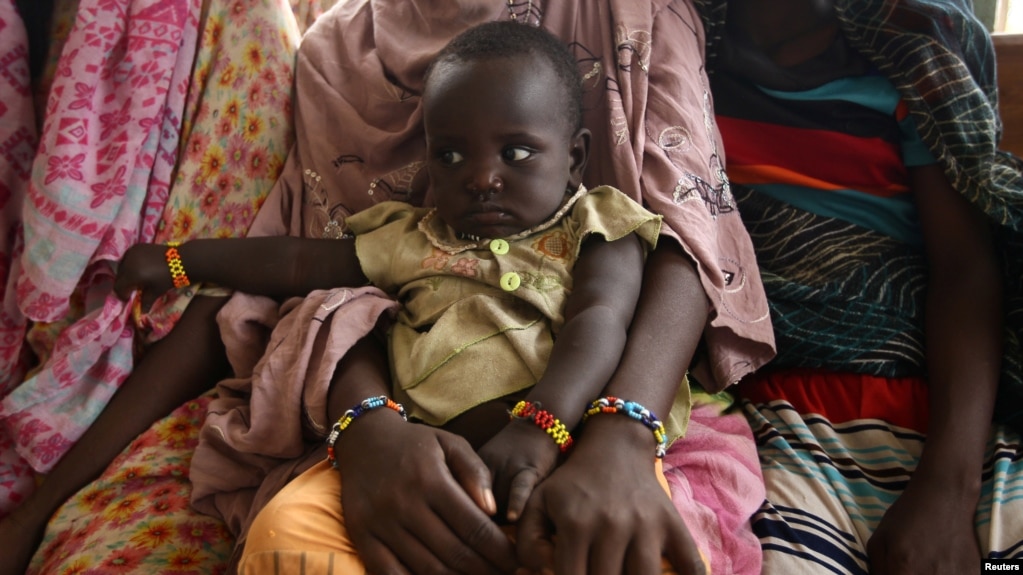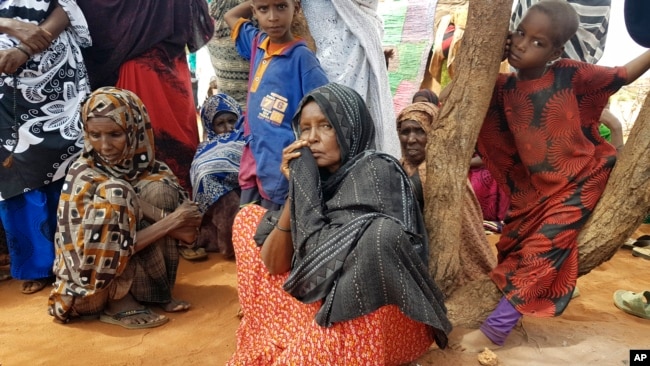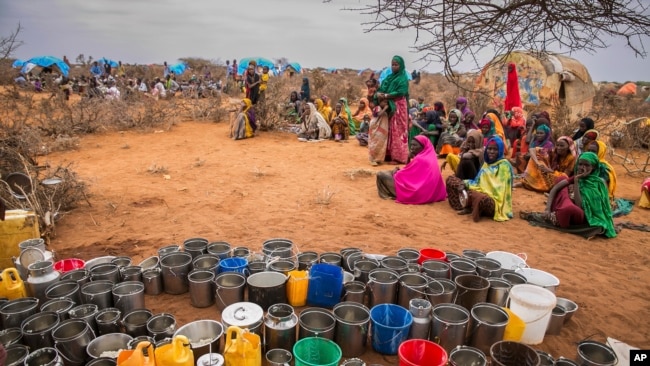“When there is no light, shine forth. When there is apathy, show caring for another. When there is a famine, be bread to the hungry soul. When despair is rampant, inspire someone. When there is a drought of faith, be a well spring of hope.” (A Prayer for Help).
Recently I was discussing Gorta-Self Help Africa’s work at a meeting with supporters from around the country, explaining our aims, and the efforts that we are taking to help to combat the current crisis in East Africa.
For many, like me, who are old enough to remember the 1980s, the current food and drought crisis in East Africa is not dissimilar to the devastating emergency that put Ethiopia on the map for many Westerners 30 years ago. The tragic famine of 1984-5 introduced us all to Bob Geldof, an outspoken and charismatic campaigner who left behind his rock star career to shame the world into coming to the aid of a nation that was on its knees. All those years ago, Geldof’s efforts raised tens of millions, and mobilised people across the world to support ‘Band Aid’ and ‘Live Aid’ and end the misery of millions who were struggling to barely survive in Ethiopia and South Sudan.
The same old scenes
Yet, here we are over 30 years later – and the same old scenes are being played out in many of the same parts of this great continent, especially at the moment in East Africa. On the dusty plains in many east Africa countries, the rotting carcasses of cows, goats, donkeys and camels bake under the hot African sun. They are fodder for hungry vultures and stealthy hyenas.
Until recently, everything was going reasonably well for people in the region. Late last year things changed - rural poor households watched helplessly as day after day of cloudless skies heralded the arrival of yet another tough year for people who have been born to such toughness. But who could have known the depths to which such things might descend; who could have guessed that these particular bright blue skies were to herald the worst humanitarian crisis that Africa has seen in half a century.
The current food crisis in East Africa has been with us now for nigh on six months, and despite the best efforts of governments and international aid agencies, it shows little sign of relenting. By the day households are being forced to take dramatic steps – abandoning their homes and their farms, killing and selling their livestock, and doing all that is necessary to survive the toughest of times. In a region where wealth is often measured in the numbers of animals that a family owns, the loss of prize animals – the household insurance policy – is devastating.
Earlier this year, the United Nations Office for the Coordination of Humanitarian Affairs (OCHA), called East Africa’s condition “a deteriorated humanitarian situation”. Today the images and stories coming out of Ethiopia and its neighbouring countries are similarly heart breaking. In 2017, over 24 million people are on the brink of starvation and desperately in need of food, water and medical treatment. Drought and conflict mean that people are already dying in South Sudan and Somalia. In Kenya, the government has declared a national emergency and Ethiopia is battling a new wave of drought following the strongest El Niño weather on record.
Time is running out
Many of the farmers in the drought and famine-affected areas didn't see this situation coming. At the beginning of 2016, rainfall forecasts showed a relatively normal year ahead. However, the failure of seasonal Belg rains meant that the planting season was limited and then when the typically strong Kiremt rains between July and September were also poor, the alarm bells sounded.
Now as we come towards the half way mark of 2017 the situation has become considerably worse. As a result, the rate of severe malnutrition is increasing rapidly, particularly among children, with more than 435,000 expecting to need life-saving therapeutic treatment this year alone. By March of this year over 20 million people needed food aid in many parts of the East of Africa. Such is the magnitude of this emergency that the Ethiopian Government has revised upwards its emergency funding appeal from $331.7 million last August to $1.4 billion today. Time is running out to procure enough food to meet these needs.
And all this is before fully measuring the humanitarian impact of the poor Kiremt rains — the worst in 50 years for much of the Ethiopian highlands, which produce 90 per cent of the nation’s crops. In those usually fertile lands, which stretch north from just outside Addis Ababa and cover an area roughly the size of Ireland, farmers are staring at empty fields instead of harvesting crops like teff, wheat, barley and sorghum.
We cannot turn our backs
East African countries, and in particular Ethiopia’s, global request for help couldn’t come at a worse time, as other large-scale humanitarian crises unfold in places like Syria, Iraq and Yemen and in lots of ways, the world seems to have turned its back and is just not interested in the plight of Africans any more. But we cannot turn our backs on Ethiopia and East African countries— we must learn from what the history books tell us about the region. You need only look back to the Horn of Africa drought in 2011, which affected 13 million people and resulted in more than 250,000 dying from hunger. Back then, the early warning signs began to emerge a full year earlier, yet the international community thought the crisis had peaked before they responded adequately. For many, it was too late.
In the years since that scandalous failure of the international system, a range of preventive measures have been put in place to ensure history did not repeat itself, including the implementation of large-scale drought resilience programmes, early warning weather reporting, and strong policy commitments from donor countries. But here we are again. This drought is forecast to be the worst in Ethiopia in 50 years, yet funding commitments from international donors are worryingly low. The Ethiopian Government has responded strongly, unlocking over $300 million in funding and showing real leadership. They expect to be able to handle most of the impact of the emergency themselves. Aid agencies are helping too. Now the international community must heed the warning and act urgently.
At Gorta-Self Help Africa, we are providing vital seed to farmers in Ethiopia, Kenya and Malawi, so that they have been able to plant the food crops they will need in the months ahead. We have distributed seed for a number of nutrient rich crops to more than 4,500 households in Kenya, while thousands more in Ethiopia are receiving seed now along with emergency food aid – so that they are ready to plant when the seasonal rains arrive in a few weeks times.
Ireland must play its part
With your help we will do much more. Ireland must play its part, like it did in 2011 when it gave much needed funding for the Horn of Africa drought response and was commended for its leadership in galvanising other donors to act. This is no ordinary year in Ethiopia. This is a “code red” and it needs to be treated like one. Hunger, drought, starvation and utter despair – will it ever end? Has nothing been achieved for all the money, time and effort that has gone into trying to end this kind of African human tragedy? The question is totally legitimate – as is the frustration and bewilderment that millions of people in Africa appear to be as vulnerable to this kind of catastrophe today as they were more than a quarter century ago. But I know from my own experience that things have changed in Africa a great deal over the past 30 years, and that there are signs of hope for the future.
I have something of a ‘vested interest’ in what happens in Ethiopia and East Africa. It’s a connection that started way back in 1984, when the images from Michael Buerk’s BBC report on the famine prompted me to change my own life, and begin a career that has seen me spend my life, since then, working to support the poor of the developing world. I worked in Ethiopia with a relief agency for a number of years, and a very important little part of this incredible country came closer to home in recent times, when we adopted two beautiful Ethiopian angels, Mia and Sophie, to create the family that we have today.
I have travelled to Ethiopia, and East Africa many times, and was back there recently with Ray Jordon, the CEO of Gorta Self Help Africa, who has just returned in the last few weeks from his most recent trip there to see for himself firsthand the devastation and the effects the drought is having on Ethiopian, Kenyan and Malawi people, especially those that are most vulnerable, the women and children.
Ethiopia is a magical place – from Old Testament times it was Abyssinia, home of The Queen of Sheba. It is unique in so many ways – having its own language and written script, its own very distinctive and distinguished people, its own culture, music and food. Ethiopia is a proud nation and only country in Africa that did not have a colonial occupier for a large part of its recent history.
A hand up, not a hand out
During my most recent visit I experienced the changes that have taken place – changes that I believe have been made possible in large part as a result of the growth and development of agriculture in Ethiopia, in recent times. As I walked through the streets of a booming Addis Abbaba, it was impossible not to note the transformation that is taking place in the country today. There is still great poverty for sure, but so too there are emerging new office blocks and hotels, major new multi-lane roads, the new light city rail trains and a city that is alive with enterprise and thriving businesses. In the countryside the transformation continues – and none more so than when I travelled with my colleagues from Gorta Self Help Africa’s to Hawassa and Butajira, to meet some of the communities who are working with our organisation today and benefiting from our hard work and from the generosity of the Irish people. We visited various households in their thatched roofed homes, saw farmers cooperative groups, and women who were making a living as a result of small credit loans they had received from the Gorta-Self Help Africa established Credit Unions to set up their own businesses.
These are simple people living simple lives, many without electricity and nearly all without running water to their homes, but they are getting by, and are doing much better than they had in the past. When we visited we saw that their grain stores were full, they had vegetables growing in their compounds, and they were proud to report that they could afford to send children to school, and were in a position to invest in small ‘luxuries’– such as pots, cooking utensils and clothing for the family. The picture was one of ‘self help’ – people who were working hard to make their lives better. These were people who had been given a hand up, not a hand out from charity, and they were proud of their achievements.
Which brings me back to the recent drought crisis and other difficulties in some parts of East Africa that causes so much suffering for so many poor and vulnerable people. As with all major humanitarian crises there is never just one cause – and in Africa over the past while the crisis was the result of severe drought, political instability and other factors. However, there was evidence too of some progress - as Ethiopia, which despite enduring the worst of some severe droughts over the past few years, was not as badly affected in terms of human suffering as neighbouring Somalia. In Ethiopia, up to 80% of people rely directly on farming for their survival and economic well being, so it stands to reason that better farming – where people can grow more, earn more, and can have different crops from which to make a living – means people will be able to cope better as this crisis continues. The fact that no area of Ethiopia was hit by what was officially defined as ‘famine’ in the last year or two is a testimony to the hard work of a great number of people that increased the country’s farming production systems in the recent past. However, that seems about to change drastically as things are getting a lot worse and, according to experts, looks like food aid will be needed well into 2018 in East Africa and in other drought-stricken parts of Africa. The poor conditions in most part are believed to be caused by the periodic weather phenomenon El Nino. Much more needs to be done, as millions of people survive each day on the edge of a humanitarian emergency. If we want to prevent history repeating itself, we need to act now, before it’s too late.
We in Gorta-Self Help Africa are responding to the emergency by distributing essential food and seeds to households in Ethiopia, Kenya and Malawi. We are looking after some of the poorest people and families in need where thousands of people in Boset, Ethiopia, received maize last week as part of our emergency response to the current food crisis in East Africa. Each person received a 15kg bag of grain, providing them with nutritious food for the weeks ahead.
A rewarding journey
Gorta Self Help Africa cannot, by any stretch of the imagination, take credit for this situation where many of its farmers are in a position to fully cope with the crisis. But the organisation I work for has been a contributor, and has played its part in helping the people and small holding farmers of Ethiopia and other parts of East Africa to move towards a time where hopefully hunger and poverty will no longer be a part of their future. It is a long and slow road certainly, it is a journey that is both richly rewarding and worthwhile. We are hoping to organise events nationwide over the rest of 2017 and we are inviting students, companies, business people, households and staff alike to help us organise events or fundraisers or make a donation to raise funds for some of the world’s poorest people.
To make a donation or find out more about the work of Gorta Self Help Africa with its work and to ‘Act locally but impact globally’, you can make a credit or laser card donation by phoning 01-
6778880 or simply send whatever you can afford to Gorta Self Help Africa, Westside Resource Centre, Seamus Quirke Road, Westside, Galway. Also if you would like to talk about organising a fundraiser or an event please contact me at
ronan.scully@selfhelp africa.org. Because the needs of the poor are ongoing, the ideal way of supporting Gorta Self Help Africa is via a monthly standing order from your bank.
For people who have nothing, a little can mean a lot. Please also see details on
www.selfhelpafrica.org to take part in many fundraising events for Gorta Self Help Africa organised throughout the year or come up with your own Gorta Self Help Africa event or buy some of Gorta Self Help Africa’s Gift’s at
www.selfhelpafrica.org. Thank you for your kindness.






